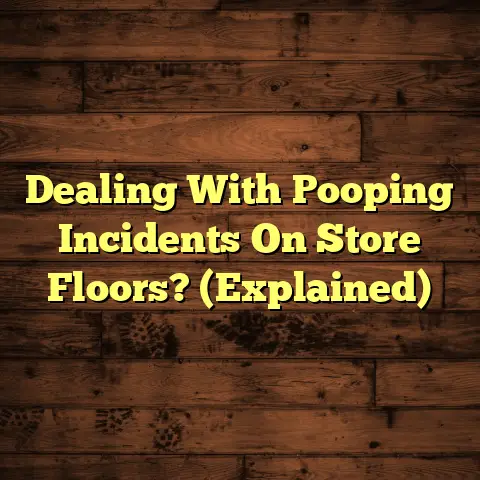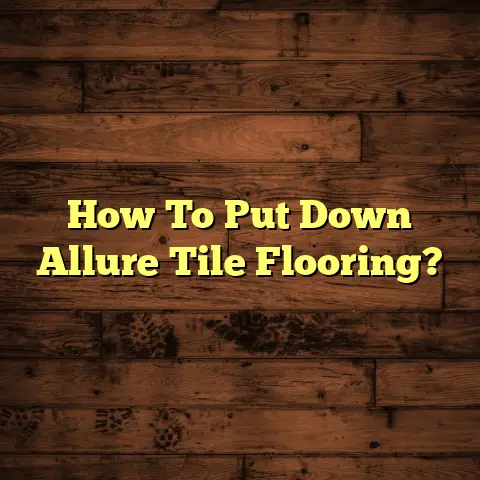Vinyl Plank Over Padding? (Will Fail In 6 Months!)
Let’s talk about something crucial in today’s world: sustainability. More and more of you are thinking about the environmental impact of your choices, and that’s fantastic!
We’re all becoming more aware of the need for sustainable building materials. And that includes flooring!
It’s not just about what looks good; it’s about understanding the entire life cycle of a product. How long will it last? What’s the impact if it fails prematurely?
That brings us to a hot topic I see popping up all the time: vinyl plank flooring installed over padding.
Is this a recipe for long-term success, or are we setting ourselves up for a flooring disaster? In my experience, it’s often the latter.
Section 1: Understanding Vinyl Plank Flooring
So, what exactly is vinyl plank flooring?
It’s a multi-layered synthetic flooring option designed to mimic the look of real wood or stone. It’s typically made of several layers, including a backing layer, a core layer, a printed design layer, and a wear layer.
There are a few main types you’ll encounter:
-
Luxury Vinyl Plank (LVP): This is the higher-end version, usually thicker and with a more realistic appearance.
-
Waterproof Vinyl Plank (WPC): WPC stands for Wood Plastic Composite.
-
Stone Plastic Composite (SPC): SPC is even more rigid and durable.
-
Rigid Core Vinyl Plank: Another term for a more dimensionally stable product.
Why is vinyl plank flooring so popular?
Well, it’s got a lot going for it!
-
Aesthetic Appeal: It looks great! The advancements in printing technology mean you can get incredibly realistic wood and stone looks.
-
Cost-Effectiveness: Generally, it’s more affordable than hardwood or tile.
-
Ease of Installation: Many vinyl plank products are designed for DIY installation, especially the click-lock types.
Speaking of installation, let’s quickly cover the common methods:
-
Glue-Down: The planks are glued directly to the subfloor. This is often used in commercial settings or when a very stable installation is needed.
-
Click-Lock (Floating): The planks have interlocking edges that “click” together. This is a popular choice for DIYers because it’s relatively easy to install.
-
Loose Lay: These planks are designed to stay in place using friction and their weight. They’re easy to install and replace.
Section 2: The Role of Padding in Flooring Installation
Okay, let’s talk about padding. What is it, and what’s it supposed to do?
Flooring padding (also called underlayment) is a layer of material installed between the subfloor and the finished flooring. It’s designed to provide a few key benefits:
-
Cushioning: Adds a bit of softness underfoot.
-
Sound Absorption: Helps to dampen noise.
-
Moisture Barrier: Some types of padding can help protect against moisture from the subfloor.
What kinds of padding are out there? You’ve got options:
-
Foam: This is a common and affordable choice. It comes in various thicknesses and densities.
-
Cork: A natural and sustainable option known for its sound absorption properties.
-
Rubber: A durable and resilient choice, often used in commercial settings.
Now, here’s where the misconceptions start creeping in. Many people think that adding padding under vinyl plank will make it more comfortable, quieter, and maybe even extend its lifespan.
But is that really true?
In most cases, no.
Section 3: The Dangers of Installing Vinyl Plank Over Padding
Alright, let’s get to the heart of the matter. Why is installing vinyl plank over padding a bad idea?
It all comes down to structural integrity. Vinyl plank flooring, especially the click-lock type, is designed to be installed on a hard, flat, and stable subfloor.
Adding a layer of padding underneath introduces movement and instability. Think about it: you’re putting a hard, relatively inflexible material on top of something soft and compressible.
What happens when you walk on it?
The planks flex and move more than they’re designed to. This can lead to a whole host of problems:
-
Movement: The planks can shift and slide, especially in high-traffic areas.
-
Buckling: The edges of the planks can lift up, creating an uneven surface.
-
Detachment: The click-lock mechanisms can weaken and eventually fail, causing the planks to separate.
I’ve seen this happen time and time again. Homeowners install vinyl plank over padding, thinking they’re doing something good, only to find their floor failing within months.
I remember one case in particular. A homeowner in Dallas, TX, decided to install LVP in their living room. They added a foam underlayment for extra cushioning. Within four months, the seams started separating, and the floor felt spongy. They had to rip it all out and start over, costing them thousands of dollars.
And it’s not just about the money. Flooring failure has environmental implications too. When a floor fails prematurely, it ends up in a landfill. That’s a waste of resources and energy.
Section 4: Common Problems Encountered
Let’s dive deeper into the specific problems you’re likely to encounter when you install vinyl plank over padding.
-
Warping or Buckling Due to Moisture Retention: Padding can trap moisture, especially if you have a concrete subfloor. This moisture can cause the vinyl planks to warp or buckle.
-
Reduced Lifespan of the Flooring: The increased movement and stress on the planks will significantly shorten their lifespan. You might expect a properly installed vinyl plank floor to last 10-20 years, but with padding underneath, you could be looking at failure in as little as six months.
-
Increased Maintenance and Repair Costs: You’ll be constantly dealing with loose planks, buckling, and other issues. This means more frequent repairs and higher maintenance costs.
I spoke with Sarah Miller, a flooring specialist with over 15 years of experience, about this issue. She said, “I can’t stress enough how important it is to follow the manufacturer’s instructions. Vinyl plank flooring is designed to perform optimally on a hard, stable surface. Adding padding undermines that design and almost guarantees failure.”
Section 5: Real-World Examples and Case Studies
Let’s get real. Here are some examples of what can happen when you ignore the warnings and install vinyl plank over padding.
-
Case Study 1: The Buckling Basement: A homeowner in Chicago installed vinyl plank over a foam underlayment in their basement. Within a few months, they noticed the floor buckling in several areas. The culprit? Moisture trapped by the padding.
-
Case Study 2: The Separating Seams: A business owner in Atlanta installed vinyl plank with a click-lock system over padding in their office. The seams started separating within six months, creating a tripping hazard and an unprofessional look.
Here’s a testimonial from a homeowner in Denver: “I wish I had done my research before installing vinyl plank over padding. It seemed like a good idea at the time, but it was a complete disaster. I ended up spending twice as much money to have it all ripped out and reinstalled properly.”
According to a study by the North American Laminate Flooring Association (NALFA), improper installation is one of the leading causes of flooring failure. And installing vinyl plank over padding definitely falls into that category.
Section 6: The Economic Impact of Flooring Failures
Let’s talk dollars and cents. What’s the financial impact of making the wrong flooring choices?
-
Replacement Costs: Ripping out and replacing a failed floor is expensive. You’re looking at the cost of materials, labor, and disposal fees.
-
Labor Expenses: Hiring a professional installer to correct the problem will add to the cost.
-
Frequent Repairs: Even if you don’t replace the entire floor, you’ll be constantly dealing with repairs, which can add up over time.
These costs contribute to the broader economic issue of waste. When flooring fails prematurely, it ends up in landfills, adding to environmental problems and straining resources.
But here’s the good news: consumer choices can influence market trends. By choosing sustainable products and proper installation methods, you can help drive demand for more eco-friendly options.
Section 7: Conclusion
So, let’s recap. While vinyl plank flooring can be a great choice for its aesthetics, cost-effectiveness, and ease of installation, it’s crucial to understand the correct installation practices.
Installing vinyl plank over padding is almost always a bad idea. It compromises the structural integrity of the floor, leads to premature failure, and contributes to waste.
I urge you to consider the long-term effects of your flooring choices. Invest in proper installation methods that align with sustainable practices. Your wallet and the environment will thank you for it!
Don’t let a quick fix turn into a costly and environmentally damaging mistake. Do your research, follow the manufacturer’s instructions, and choose the right installation method for your specific flooring product.
Happy flooring!





